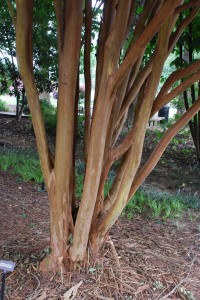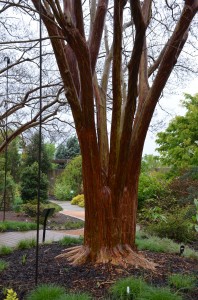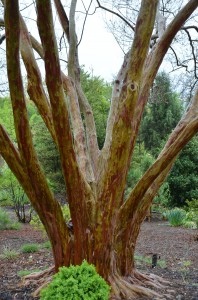Many cultivars of crape myrtles are hybrids that combine the large, colorful flowers of common crape myrtle (L. indica) with the mildew-resistance and cold hardiness of Japanese crapemyrtle (L. faurei). Many U.S. National Arboretum hybrid releases excel with beautiful year-round ornamental bark.
Among the tree forms are ‘Natchez’ (my favorite), ‘Apalachee’, ‘Lipan’, ‘Muskogee’, and Tuscarora’. Natchez possesses extraordinary cinnamon brown winter bark and is rated among the hardiest in USDA hardiness zone 6.
Some intermediate shrub crape myrtles also exhibit extraordinary bark that is often passed over by landscapers. Gardeners should remove the lower lateral branches to catch a full view of these better forms: ‘Acoma’, ‘Hopi’, ‘Sioux’, and ‘Tonto’. Wait 5 to 6 years to properly evaluate these and other shrub types.
According to Dr. Gary Knox, University of Florida crape myrtle authority, ‘Acoma’ and ‘Lipan’ exhibit near white to creamy brown bark. This trait is desirable in the deep South where white bark birch species (Betula spp.) do not tolerate the intense summer heat and humidity.
Japanese crapemyrtles (L. fauriei) possess some of the best winter bark color. These multi-branched trees grow taller, 40 feet or more in height. On the grounds of the J.C. Raulston Arboretum is a 50 foot tall specimen of ‘Fantasy’ with exquisite cinnamon brown flaking bark. Nearby is another outstanding L. fauriei beauty ‘Townhouse’, with a darker brown bark. White flower spikes in early summer tend to be smaller but very abundant. Japanese crapemyrtles bloom only once a season.




 Posted in
Posted in 
